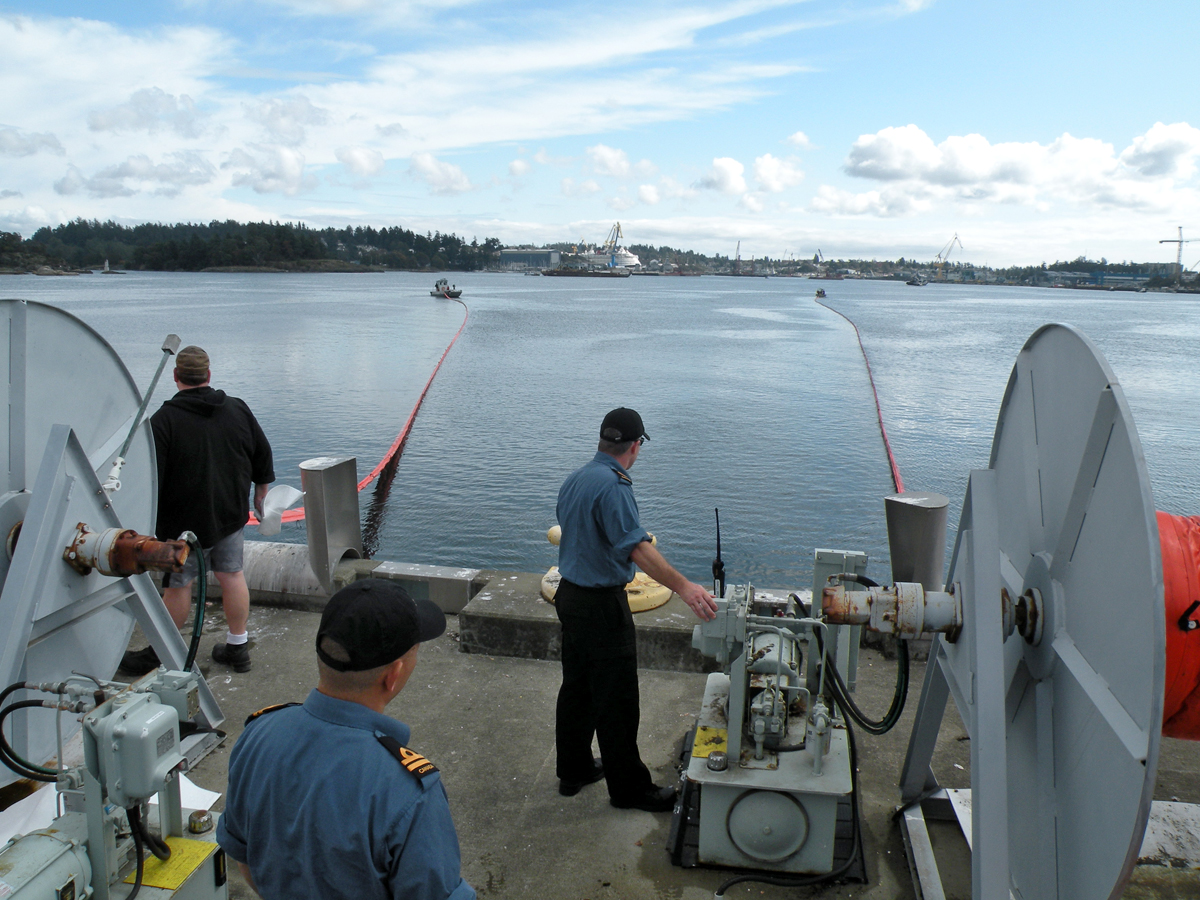Fuel spill response put to the test
By Lookout on Oct 04, 2019 with Comments 0

A Base Logistics employee and LS Darryl Forry of HMCS Regina deploy a containment boom from F Jetty during a spill response training exercise on Sept. 18 in Esquimalt Harbour.
Peter Mallett, Staff Writer ~
A coordinated effort by civilian and military personnel at the base resulted in the successful execution of the first annual exercise of the Colwood Fuel Facility (CFF) Environmental Emergency (E2) Plan required under federal legislation.
Port Operations and Emergency Services Branch (POESB) led the day-long training and exercise held on Sept.18.
The exercise simulated DND’s response to a 32,000L marine spill at the Colwood Fueling Jetty, one of several environmental emergencies identified in the E2 Plan for the CFF. The training and exercise tested DND preparedness and response to such an emergency and involved approximately 20 individuals from POESB, Base Logistics (BLOG), Formation Safety and Environment (FSE), and sailors from HMCS Regina and HMCS Vancouver.
The E2 Plan and annual exercises are a requirement under the recently amended Environmental Emergency Regulations that came into force on Aug. 24 under the Canadian Environmental Protection Act. E2 Regulations establish minimum threshold concentrations and quantities for 249 hazardous substances. Under the regulations, organizations that own or manage a specified substance at or above the thresholds are required to officially notify Environment and Climate Change Canada, inform the public if they may be adversely effected, and develop, exercise, and maintain an E2 plan.
Participants spent the first portion of their day in the classroom learning about the regulations and the CFF E2 Plan, marine spill response, and familiarization of emergency response equipment.
The spill simulation took place in the afternoon and involved the deployment of approximately 2,000 feet of booming to contain the mock spill, and the deployment of skimming devices that would be used to collect the fuel if a spill had actually occurred. A separate boom was also placed across the entrance of Dunn’s Nook to protect the sensitive estuary.
While POESB already has a marine spill response plan in place for a number of base locations, this response plan is specific to a marine spill during fuel transfer at the CFF and involves a coordinated effort from multiple units.
Environmental Officers overseeing the exercise, Lorraine Crinkley of POESB and Cain Van Cadsand from FSE, congratulated the participants for their “keen” interest in completing the exercise and providing several, lessons learned to improve DNDs response and to update the CFF E2 Plan.
“It was a strong team effort from everyone involved,” said Crinkley. “This was a complicated scenario and it was great to see multiple units working together so effectively, which is what we would strive for in the event of a real spill of this scale.”
For further information about the E2 Regulations please visit the FSE base intranet site link http://esquimalt.mil.ca/fse/Formation_Environment/Environmental_Emergencies/Environmental_Emergencies.HTM
Filed Under: Top Stories
About the Author:





